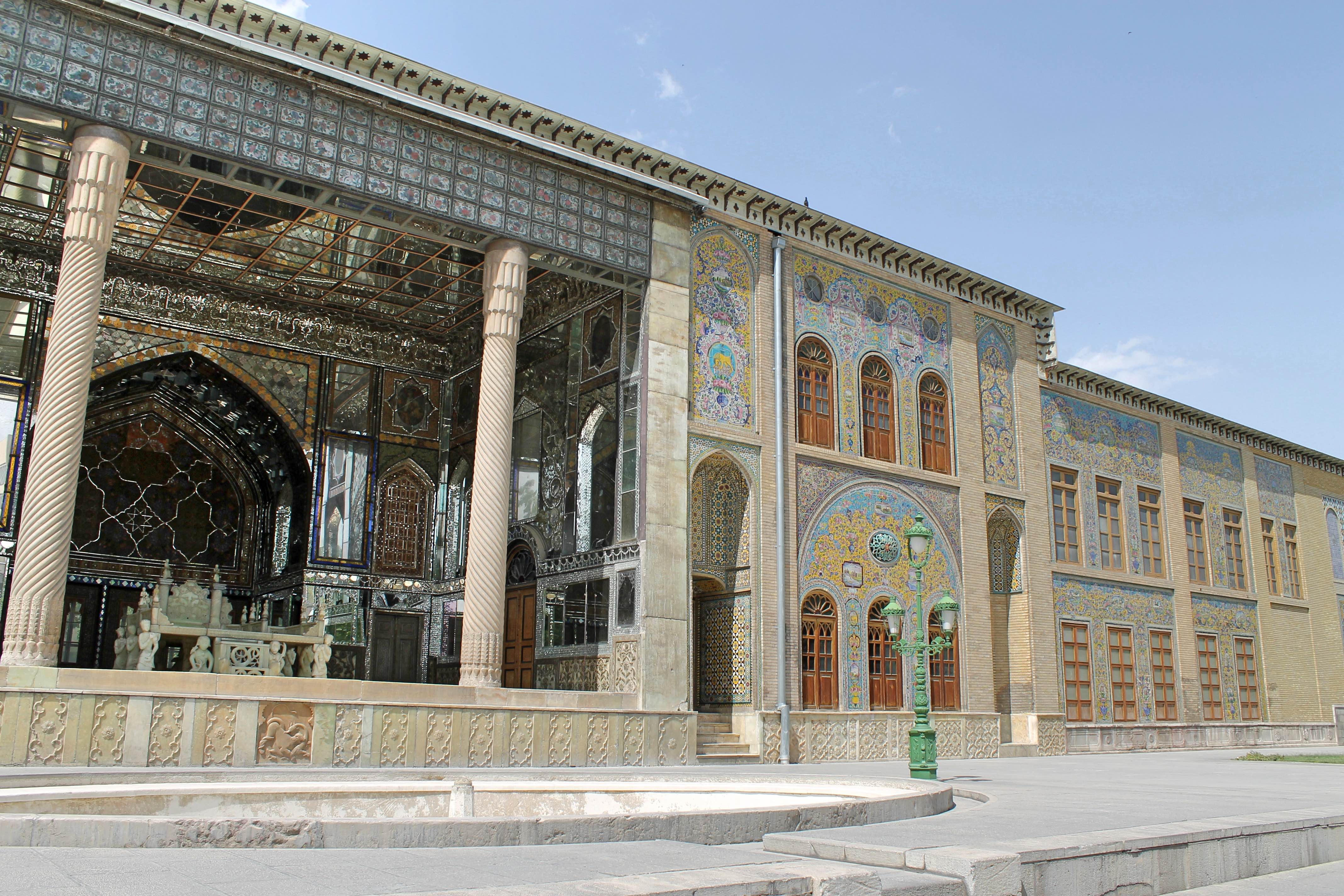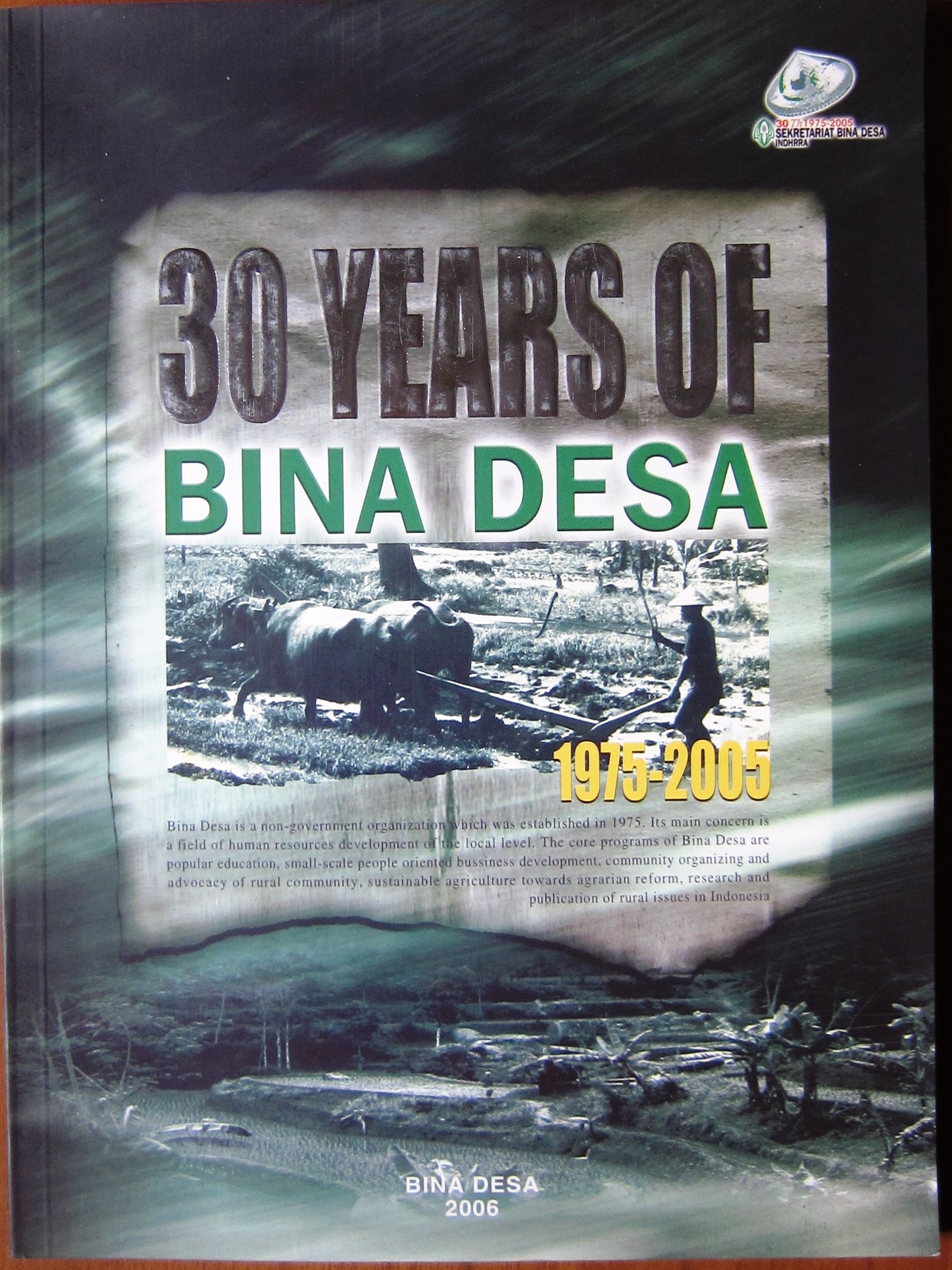Angel: Lima, Peru
Peru is the farthest country (from Indonesia) that I have ever visited so far. l always had a wish to visit the country after I read some comics about the Inca Empire and Andes Mountains in my childhood. And my dreaming destination was Machu Picchu, the ruins of the Inca Empire. When I traveled to the United States in 2009 for a business trip, I took a leave afterwards. I didn’t want to miss the chance to see Peru. It was already near. It would save not only my travel time, since Peru and the United States are on the same continent, but also my budget. Yes, I flew to Peru from the United States; Washington, D.C. to be exact.
In that year, I had been taking a Spanish course for the last two years. So I was confident enough to travel to a Spanish speaking country. It was also my time to practice the new language I had learnt. My confidence was also enhanced because I had a contact who lived in Lima, the capital of Peru, his name was Angel. I knew Angel when I was looking for a speaking partner to practice my Spanish on the internet, and I particularly searched for someone who lived in Peru because I had planned to visit it.
One Hostel
Lima was on the last leg of my two-week trip. I visited Puno, Cusco including Machu Picchu, and Lima sequentially. Peru is truly captivating. Every city has a different color.
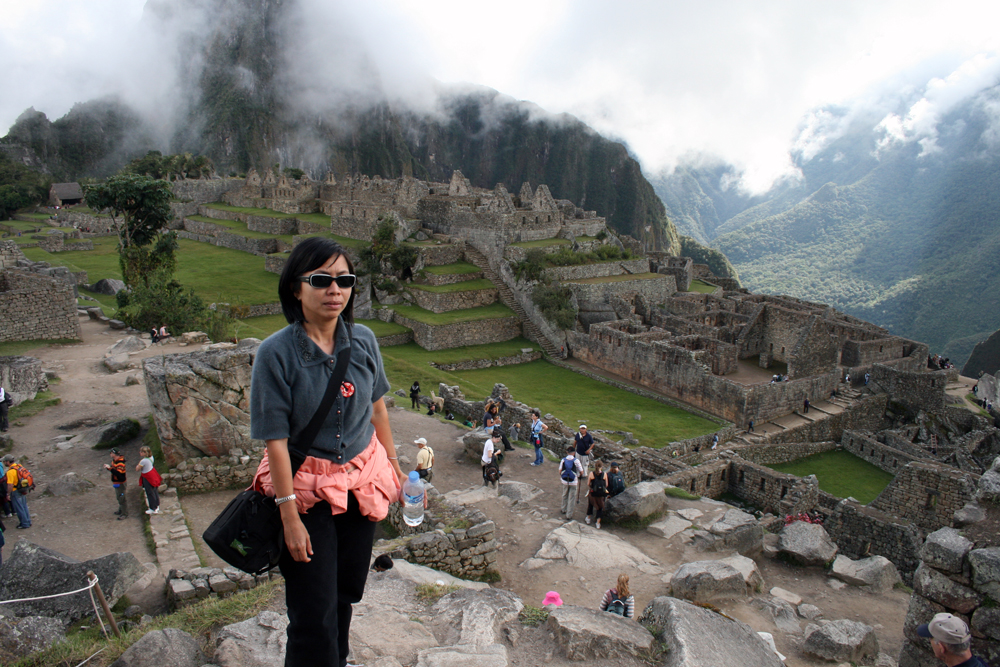
It was my very first time visiting a big city in a South American country and I heard some horror stories about the capital city of Peru. Security and safety should be my precaution. Therefore, when I searched for a lodging in Lima, my first requirement was the security and safety aspect. After reading some reviews from travelers, I decided to book my bed and breakfast in Barranco, which was a bohemian district in Lima.
Before arriving in Lima, I had been emailing with the hostel manager. She told me that from the airport I could take the airport taxi to get to her hostel, but I was a bit hesitant to do it. So I asked Angel if he could pick me up from the airport. And he was kind enough to grant my request.
My aircraft from Cusco landed in Lima’s Jorge Chavez International Airport in the early afternoon. It was a smooth flight by LAN.
When I finished taking my luggage from the baggage claim area, I saw a young man approaching me. He must be Angel, I thought. “Wahyuni?” he asked. “Soy Angelo,” he gave his hand. We shook our hands. It was the first time I met him in person. I thanked him for picking me up and I was glad he could make it.
The airport was quite busy but we managed to get a taxi. The Jorge Chavez International Airport was situated far away from the capital Lima. And I could see the dry landscape all the way from the airport to the city. I didn’t see any greens. On the way, given my beginner to intermediate Spanish level, I told Angel about my trip in other cities in Peru. He only spoke Spanish, but he knew some English words.
The traffic was bad in the afternoon. It took about one and half hours to get into One Hostel in Barranco. Melissa, the manager and owner of the hostel, was a very nice young woman, always smiling. “Welcome to Lima,” she said with a smile when I arrived at the hostel. While checking-in, she explained everything about staying at her hostel. “Wahyuni, is he going to stay here?” Melissa asked me, her eyes directing to Angel who sat in the lobby. “Of course not, he is my friend and he just picked me at the airport,” I replied. “Oh, OK.” Then she handed me a map of Lima and told some information about the places that I could visit in the city. “Your friend could tell you better,” she said grinning.
Melissa ran her hostel efficiently. I actually booked a single room with a shared bathroom. But Melissa put me in an empty dormitory room with an attached bathroom. “Here you have your own bathroom. But on your last night, you will move to a single room with a shared bathroom,” she said. There were three bunk beds in the dormitory room. It was clean and neat. The overall One Hostel was clean. Despite being small in size, it was homey and chic and it had a good local taste of decorations.
Lima at Night
Peru is situated in the central west coast of South America. The country is located along the coastline of Pacific Ocean. It is also one of the countries with a diverse ecosystem, from the desert to tropical forest. Its capital, Lima, is the country’s biggest city with the largest country’s population of more than 10 million.
After sorting my things, Angel liked to show me his city at night. So we took a bus to Miraflores. Miraflores was an upscale district in Lima. There was a park, shopping center, franchise restaurants and hotels. It was a famous place among the tourists. Although Lima is the most dense populated city in Peru, I didn’t see big crowds in this area.
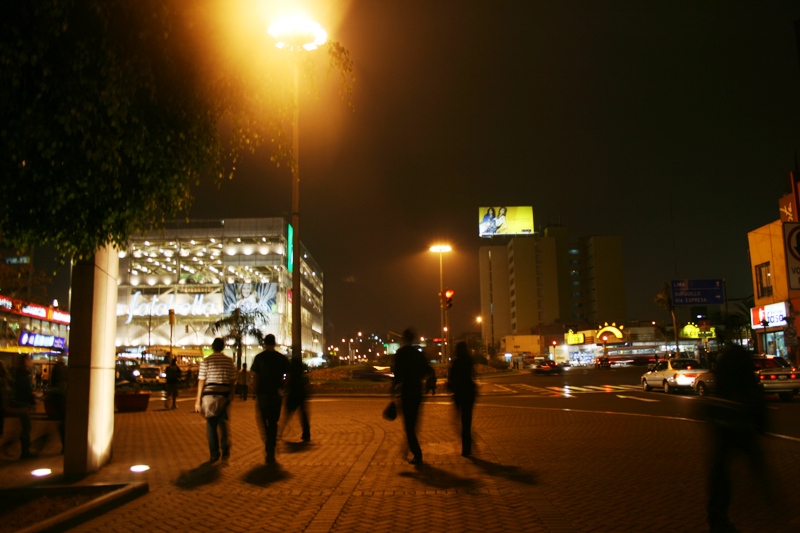
We went to a nearby park. The European Spanish influence was still intact in Peru in terms of the city’s layout. The city had many squares that also served as parks or gardens. People relaxed in the parks or just met their friends and colleagues there. European culture was also obvious in Lima in comparison with other cities that I visited in Peru. I saw some couples showing their intimacy openly in public like kissing.
After walking in part of Miraflores, we took another bus to the city center. Now the situation was different from Miraflores, the area was crowded with people who just finished their work. The traffic was congested. We got off at Plaza San Martin which was named after Jose Martin, a South America independence fighter. Here I found another big park.
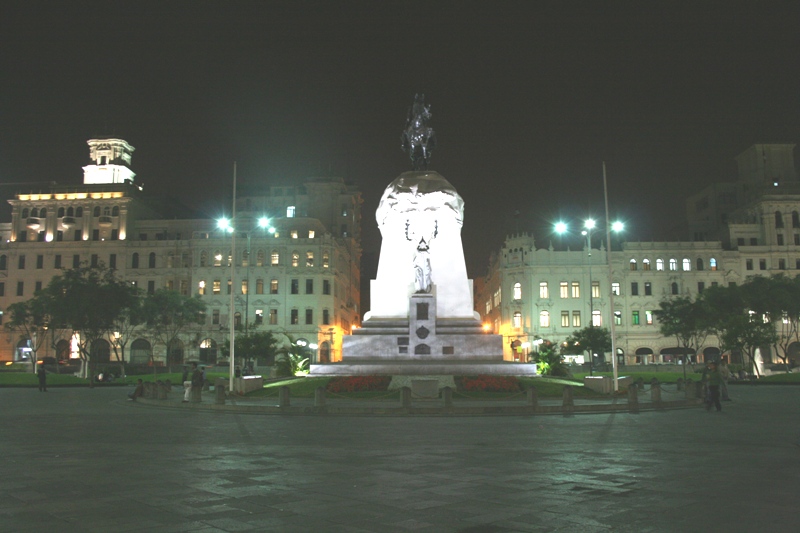
From there, we walked along Jiron de la Union, it was a pedestrian street with shops on both of its sides. Most shops sold upmarket products. I was tempted by alpaca products in one shop. Alpaca is a name of an animal that was endemic in Andes Mountains. From its hair people make natural fiber which is made into alpaca fleece.
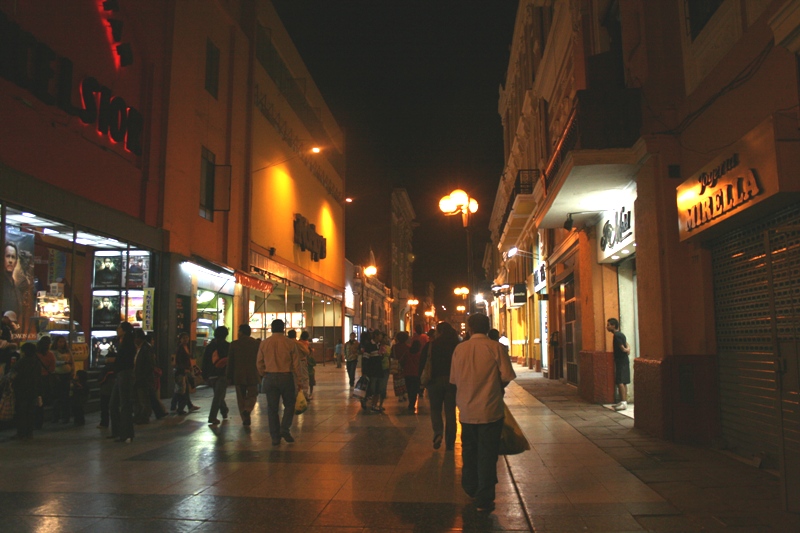
People were still active in the street. The night was still young for some Peruvians. From Plaza San Martin we walked until we reached Plaza de Armas or Plaza Mayor. At night, it was a place for hanging out. The lighting from the buildings and the corners of the Plaza made the square beautiful. I just wanted to enjoy the atmosphere in Plaza de Armas at night, so I could not pay close attention to the buildings surrounding Plaza de Armas. It just was pretty. Then we walked to another heritage building Desamparados Train Station, former Lima Train Station, which was in the area. In some intersections, I saw the security people in military uniforms watched the area.
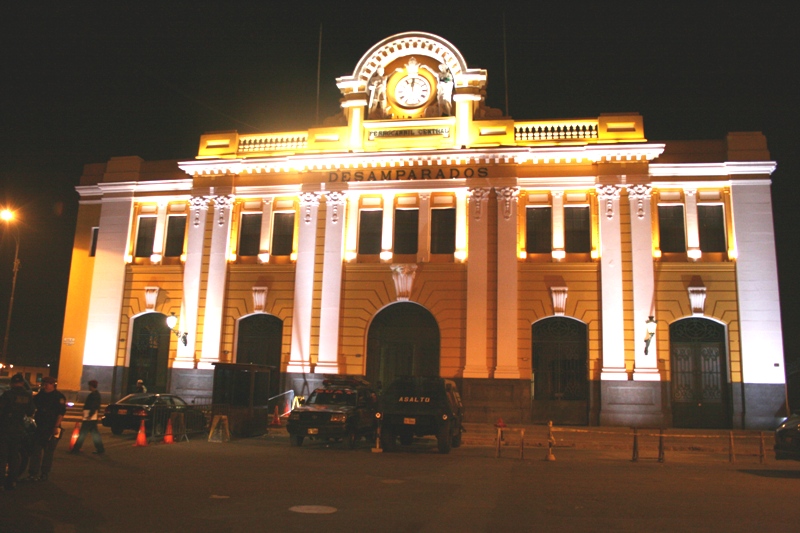
We were quite hungry, so Angel took me to an open restaurant which seemed to be popular for the locals. I ordered french fries and fried chicken with local sauce. I realized then the food portion in restaurants in Peru was big for me, and I usually could not finish it all although the taste was good. The visit to Peru, many people said, was incomplete without trying pisco sour. Pisco is a colorless liquor produced from distilled fermented grapes. It is produced in Peru and Chile. It was sour because citron is added on it. My pisco sour was served in small glass, it should be in martini glass, but I was not dining at fancy restaurant.
Enjoying Lima at night was fun. Angel always advised me if I wanted to take out my camera. So I always asked him whether or not it was safe to take photos. We went back to Barranco by the bus.
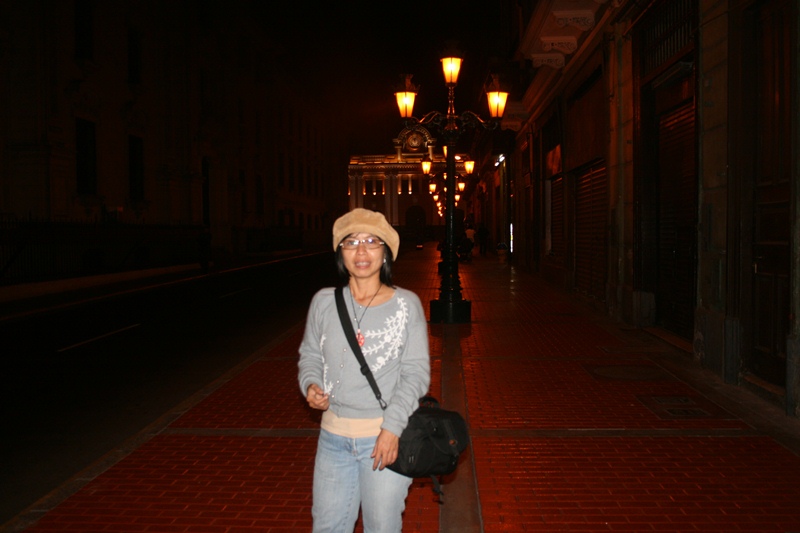
Plaza de Armas
In my hostel, Angel and I planned about what I could do on the next day. As he needed to work in the morning, he was only able to accompany me after midday. We could meet at Plaza Mayor, in the center of Lima. I was looking forward to seeing his city. After settling up the plan, we said goodbye.
The next day, I was excited to explore some part of the city again. This time I would be able to see Plaza de Armas in the light. In anticipation of the traffic, I decided to leave one hour before our scheduled time. The security guy at the hostel helped me to get a taxi with a meter. My destination was Plaza Mayor.
Since Lima faces to Pacific Ocean, the condensed from the Ocean in the form of fog could cover the city. In May, the fog overlaid Barranco and other districts in Lima. It was a natural phenomenon that the locals have been familiar with. But for me it was cool to see it.
Inside the taxi, I was a bit anxious, but my Spanish skill did help me to break the ice with the driver. I talked a bit with him and he was surprised to know that I was from Indonesia.
Within 30 minutes, I arrived in Plaza Mayor or Plaza de Armas. As soon as I got off the taxi, I was surprised with its looks. The view during the day was totally different from the night. It was a huge, spotless square. On some parts of its big stone tile floor, there were sections for green grass to grow. Row of tall palm trees were planted at distance on the four sides of the square. In the middle of the square was a fountain and cascaded statue.
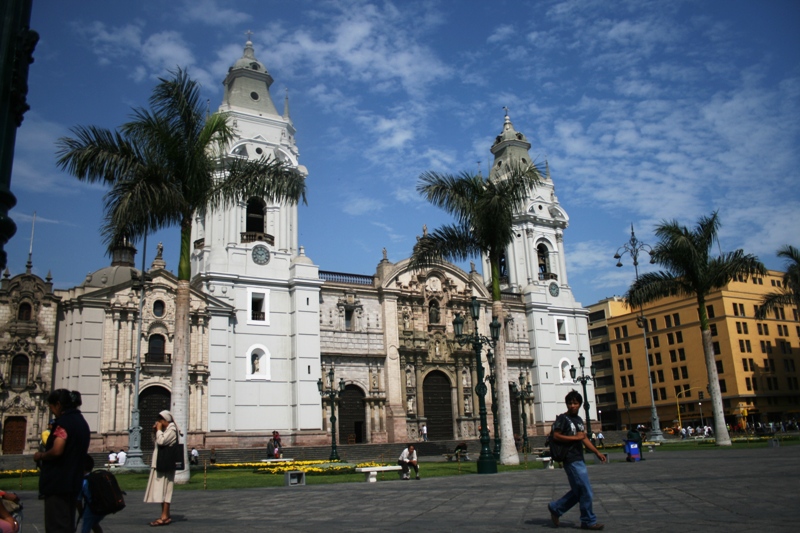
Now I could clearly see the historical buildings surrounding Plaza de Armas such as the Government Palace (The Palacio de Gobierno) which is the house of President Peru; the famous Cathedral of Lima; the City Hall, the headquarters of the municipality of Lima; Palace of the Union; and the Archbishop Palace of Lima. The City Hall and Palace of the Union were housed in colonial buildings with the protruding balcony. This type of balcony was the characteristic of heritage buildings in Peru that was built in the late 17th century. And they were all painted with eye-catching dark yellow. Plaza de Armas indeed had Spanish influence as Spain colonized Peru for almost 300 years. It is included in UNESCO World Heritage
While waiting for Angel to come I took a seat on the stairs in front of the Cathedral of Lima. It was not hot so I was just watching the live activity. It was fun. I saw some security personnel with weapons hung on their shoulders walking in the square. They were also present last night at Plaza San Martin. I read about how the municipality of Lima wanted to make sure that the city was secured and safe for its visitors. In front of the gate of the Government Palace the crowds of tourists gathered to listen to their guides. Some tourists in groups or solo like me were also seen taking the photos in the square. Others were just local people who enjoyed sitting on the banks in the square.
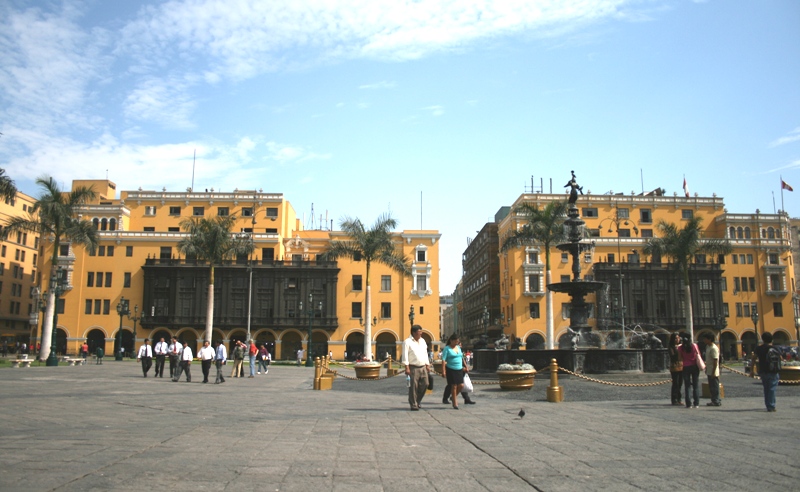
I was amazed at how well the Plaza was taken care of. While I was living up the view around me, Angel arrived. He said that he took a half-day leave to be able to accompany me. “You came from far away, and not everyday being in Lima,” he explained in Spanish. It was very kind of him. Angel was another perfect stranger that I found in Lima.
I told Angel that I’d like to see the market and the surrounding area in the Old City. I also told him that I didn’t mind walking. Before leaving, I took some photos in Plaza de Armas. Then we walked to the market through Jiron Junin. Lima was a vibrant city. It fascinated me to see the everyday life of locals along the way.

As we were near Mercado Central or Central Market, the atmosphere was getting busier with koolis passing by and pick-up vehicles loading the merchandise and commodities. We entered the market building and explored the wet market on the second floor. The whole market was clean. It was not packed either. There was a food court area as well. Outside the market building, there were many shops selling groceries, textiles, household wares, and anything you name. Mercado Central was a big trading center in Lima.
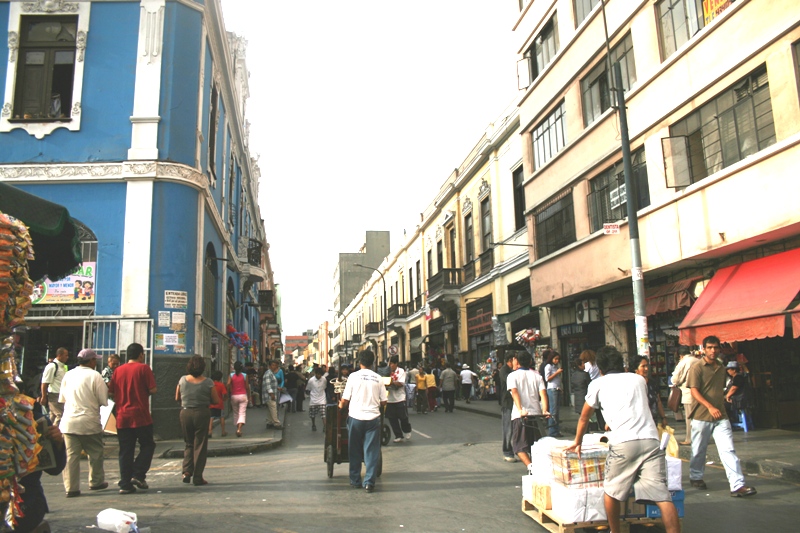
We kept up strolling to Barrio Chino. I was surprised that Lima also had a sort of ChinaTown. It was actually just a segment of a car-free passage flanked with a row of shophouses on both sides. Some businesses in this passage were related to Asia. They had their billboards written in Chinese alphabets. There was an Asian restaurant, and Angel invited me to have lunch there. He might think I missed Asian food. I tried their Asian fried rice. It was not bad although the taste was not as good as I expected.
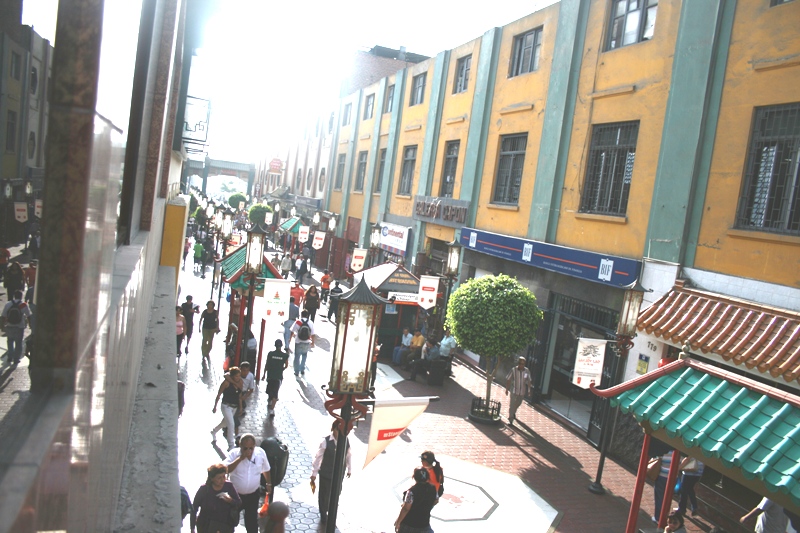
After eating we continued to walk again. I could see the real everyday life of Lima, where both white collar and blue collar workers were in action. We kept walking to Convento de San Francisco, still in the Old City. It was a basilica and monastery. The complex was also included in UNESCO World Heritage.
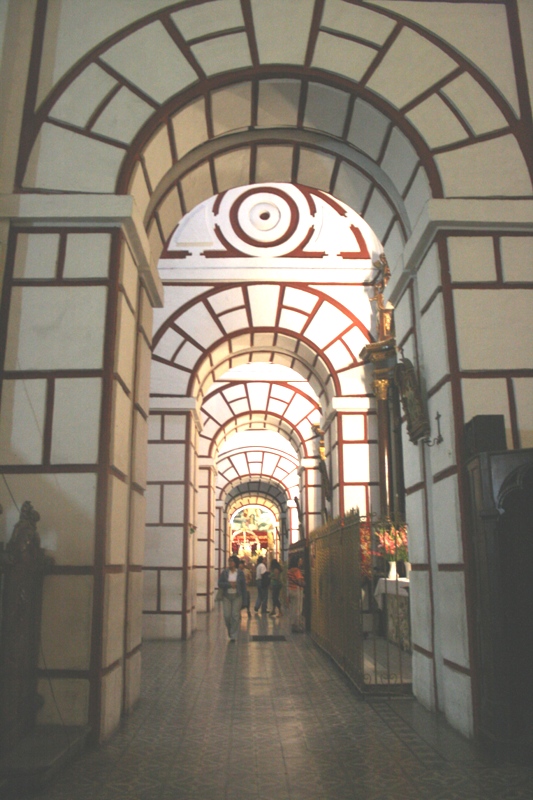
We entered the basilica. It was my very first time to see the interior of a Spanish Baroque building. I walked down to the main altar that was made of wood. Above my head was the geometric vaults with Moorish and Spanish designs. The interior was superb. Angel and I stayed for a while inside the basilica to adore its architecture. I could take photos but without the flash. Outside the basilica was a courtyard with so many pigeons. There was a museum catacomb in the complex but we didn’t go there as Angel would take me to the hill to catch the sunset.
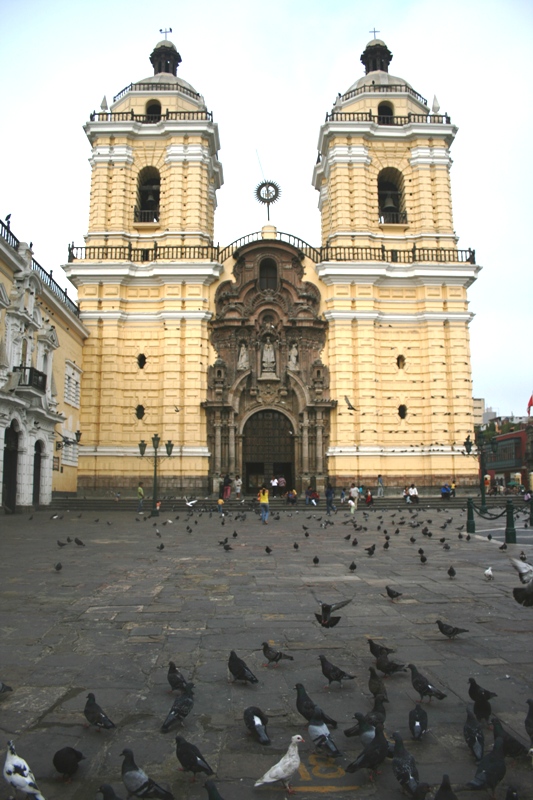
Cerro San Cristobal
“We’ll take a local bus, it’s much cheaper than a tourist bus,” Angel said in Spanish. “No problem,” I replied. That was the benefit of walking with a local. She or he would know very well about the city. The local bus left from Plaza de Armas by the Governor Palace. So we went back to the point where we met at midday.
We got on the minibus and took the front seat so I could get a better view along the trip. The passengers were all local tourists. I was the only foreign tourist in the bus. And Angel was right, the ticket was only 5 soles for the return trip, much cheaper than the tourist bus. The difference was it was a non air-conditioned bus and the information was in Spanish, but either tourist bus or local bus had the same destination: Cerro San Cristobal in Rimac district.
As the bus moved on, we passed by the poor residential areas. Once I explored the city then I could see the level of social life, from the upscale to the lower. The bus ascended the road to the 409-meter high hill, and the guide started to give explanations about Cerro San Cristobal. The climb to the hill was steep enough but the driver seemed to be familiar with the terrain.
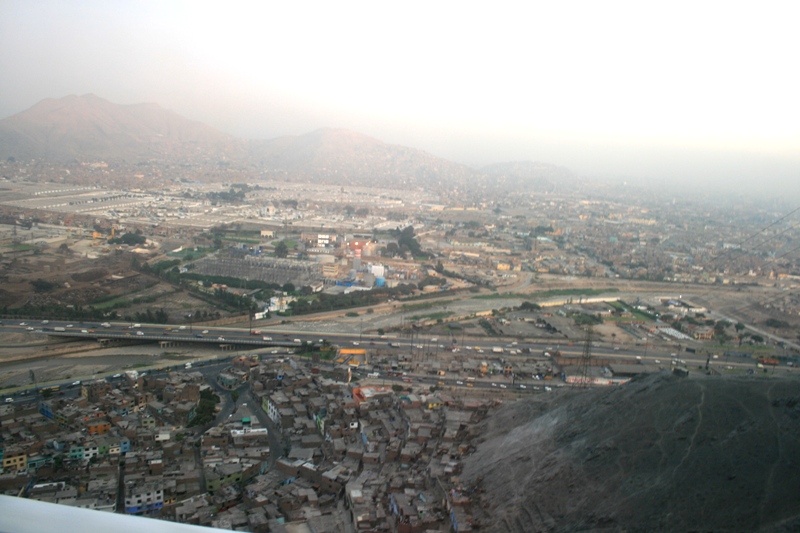
The bus finally reached the summit. It was a relief. Cerro San Cristobal in the pre-Columbian period was believed to house the sacred mountain spirit, Apu. In 1927 a priest constructed a 20-meter high cross which stood on the summit. It has been the landmark of Lima. Since the big cross was built, Cerro San Cristobal has become a pilgrimage site for devout Catholics during the Holy Week.
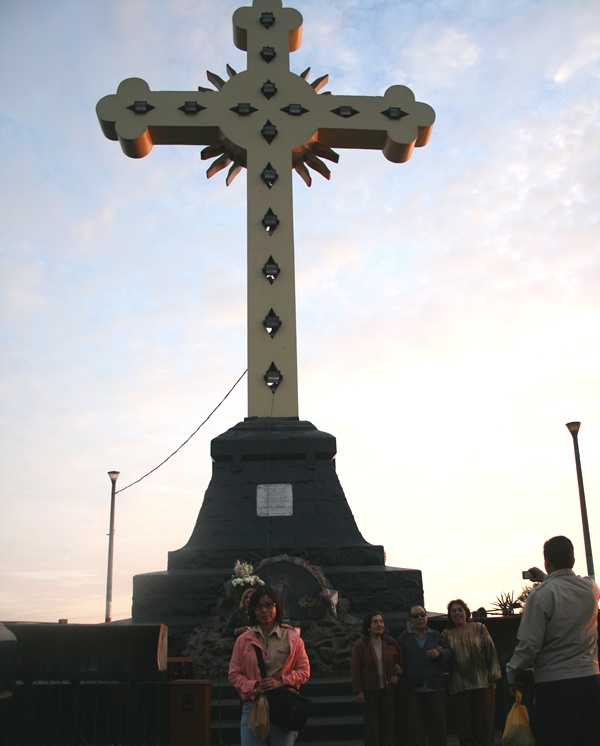
There was a small museum on the top and facilities like toilets and a kiosk to buy drinks and snacks. From top of the hill it was obvious that Lima was situated in the valley in the desert. According to Angel, we could have seen Pacific Ocean unless there was no fog. We waited for the sunset on the top. The view was spectacular as the gradation of the sky from bright lilac to darkness was right in front of our eyes. And we abruptly saw the skyline of Lima as soon as the city turned on its lights. It was beautiful. At night the cross was lit by the lights. Our bus was the last one. We went back to Plaza de Armas through the winding road.
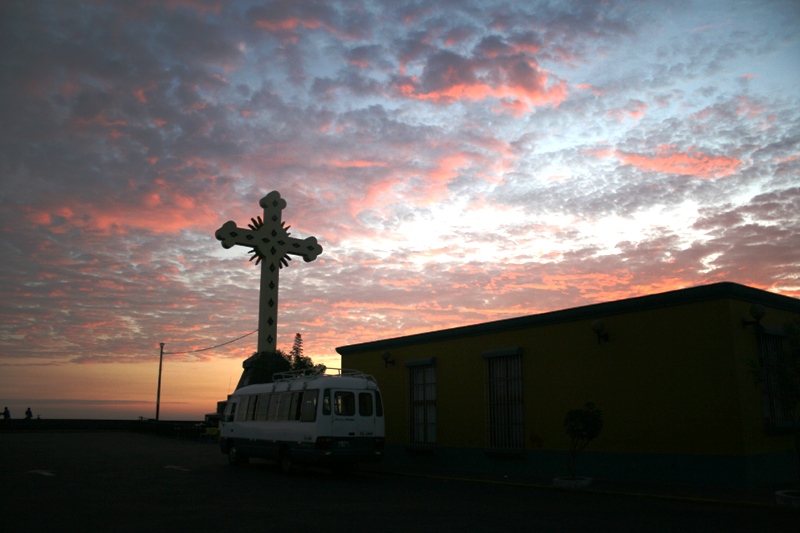
I was happy with the trip to Cerro San Cristobal, the experience taking a local bus and seeing Lima from the top was really something. We went back to the center and we’d like to have dinner before I returned to my hostel.
As it was late already, Angel decided to drop me off at my hostel. My first day exploration in Lima was full and perfect. Next day was my last day, and I was looking forward to touring the city again.
To be continued

